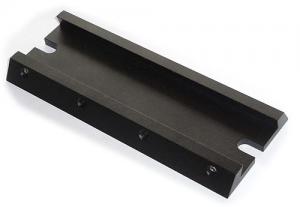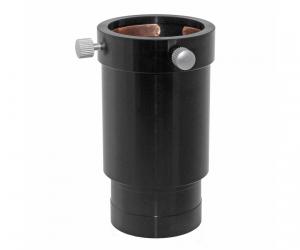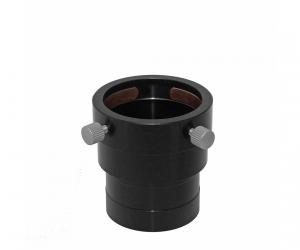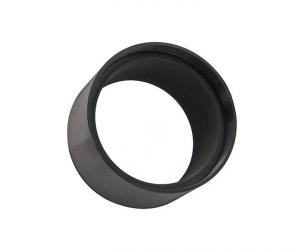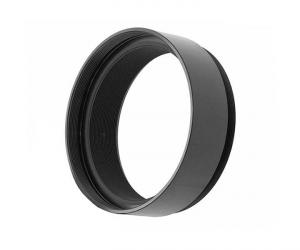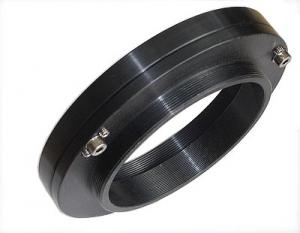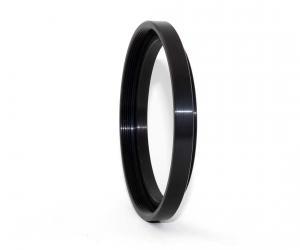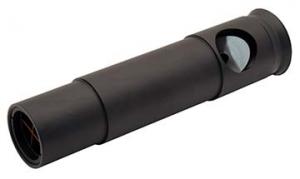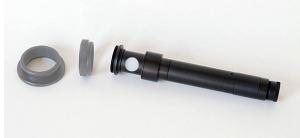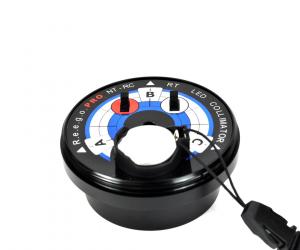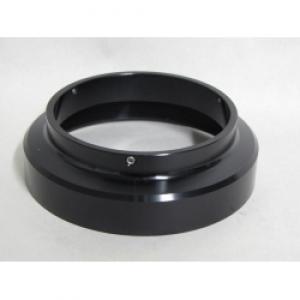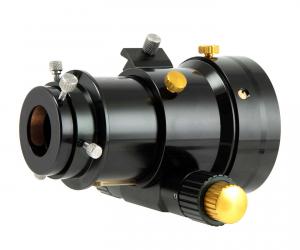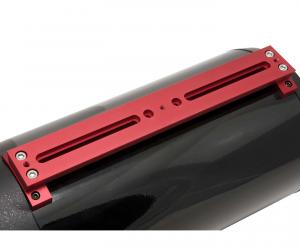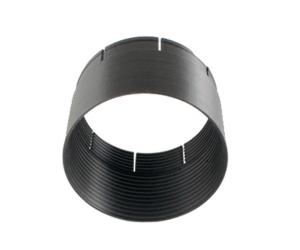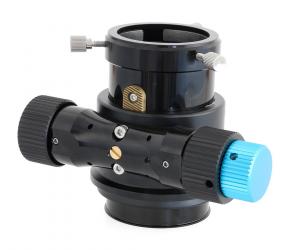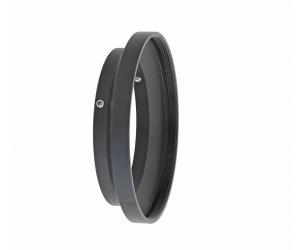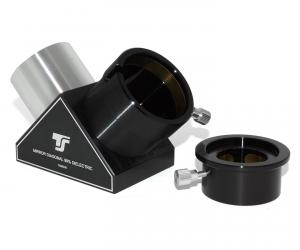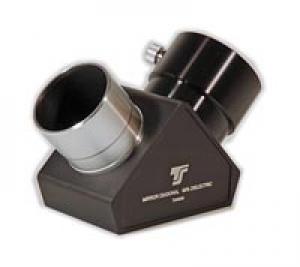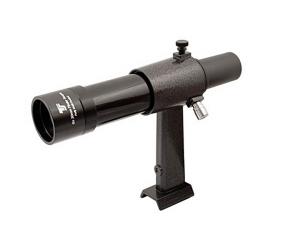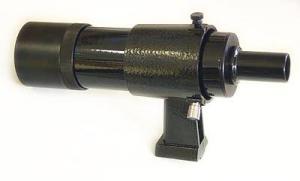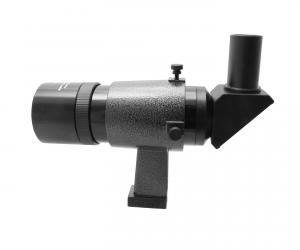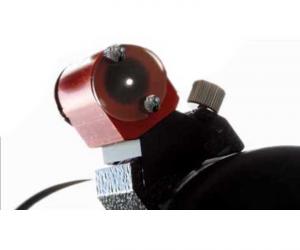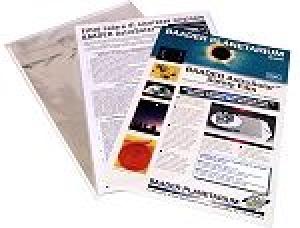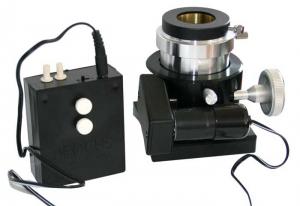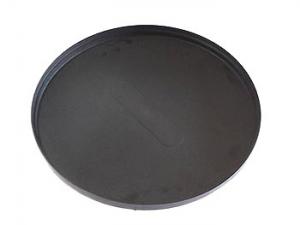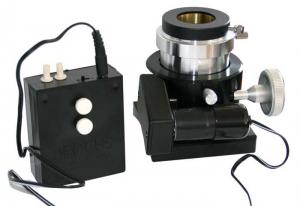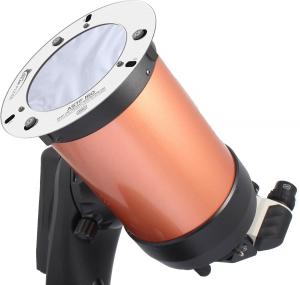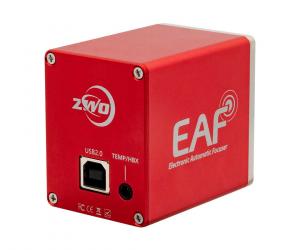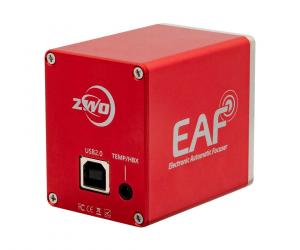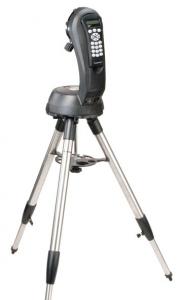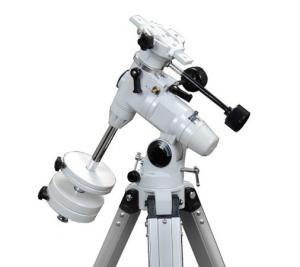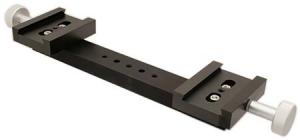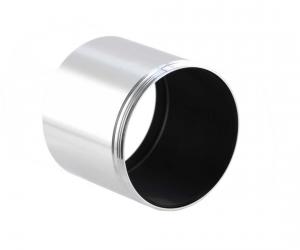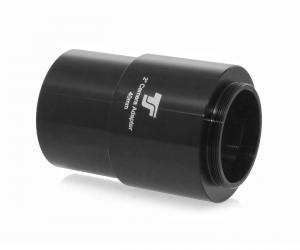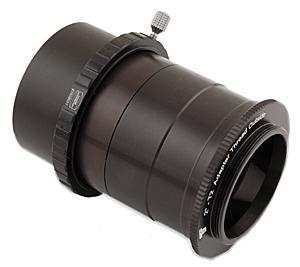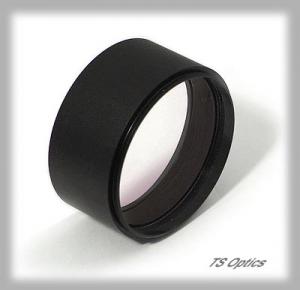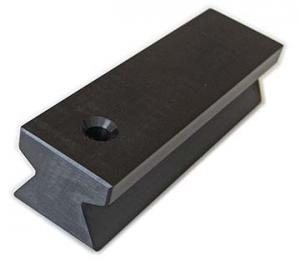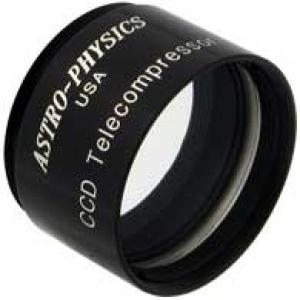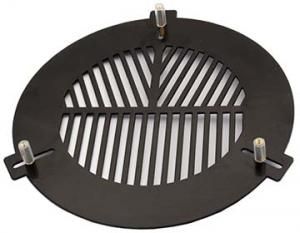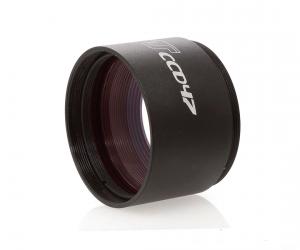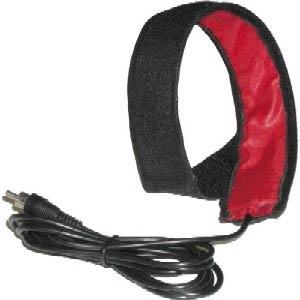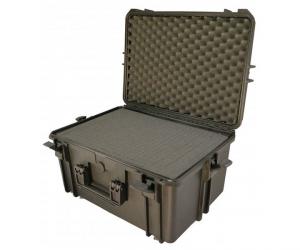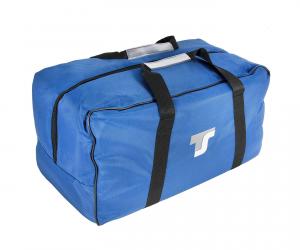- Telescopes
- Overview:
Telescopes - Achromatic Refractor
- Apochromatic Refractor
- Overview:
Apochromatic Refractor - ED Refractor - less color aberration than an achromatic
- SD APO - color free 2-element APO objective
- EDT APO - 3 element ED objective
- High End APO with 3-element APO objective - no color aberation
- Flatfield APO with flat field for Astrophotography
- All Apos and EDs from all manufacturers - large overview
- TS APO and ED from Japan with high quality optics
- Overview:
- Newtonian Telescopes
- Dobsonian Telescopes
- RC Ritchey Chretien Telescopes
- Casssegrain Telescopes
- Reflektor Telescopce with Lens Correcture
- Maksutov Cassegrain Telescopes
- GoTo Telescopes
- Solar Telescopes H-Alpha
- Overview:
- Mounts Tripods Rings Rails Power Supply ...
- Overview:
Mounts Tripods Rings Rails Power Supply ... - Mounts Equatorial with GoTo
- Mounts Equatorial without GoTo
- Mounts Azimutal with GoTo
- Mounts Azimutal without GoTo
- Mounts GoTo - Harmonic Drive
- Travel mounts for astro imaging
- Tripods Piers Polar Wedges
- Mount Control & Electronics
- Dovetail Clamps, Plates and Mount Adapters
- Tube Rings
- Power Supply
- Counterweights Balance Weights
- Mount Accessories - Other
- Overview:
- Telescope Accessories
- Overview:
Telescope Accessories - Eyepieces
- Barlows & Reducer Lenses
- Diagonal Mirrors and Prisms
- Binocular Viewers
- Finder Scopes
- Telescope Collimation and Test
- Cleaning Tools
- Transport and Storage
- Dust protection for Telescopes & Accessories
- Stray Light Protection
- Dewcaps and Heater
- Focusers, Adapters, Motorfocus
- Telescope DIY & Improvement
- Other telescope accessories
- Replacement Parts
- Overview:
- Filters
- Overview:
Filters - Color Filters and Color Filtersets
- Nebular Filters for Visual Observing
- Neutral-Density and Polfilter
- Photo Narrowband Nebular Filters
- Photo Broadband Filters
- Photo Planetary Filters
- Photo R-G-B and IR Cut Filters
- Photo - Filtersets
- Photometric Filters
- Clip Filter for DSLR Cameras
- Filter Wheels and Filterslider
- Solar Filters for white light
- Solarfilter for H-Alpha and Calcium
- Overview:
- Adaptors
- Overview:
Adaptors - Adapter 1,25" and 24,5mm
- Adapter 2"
- Adapter T2 - M42x0.75
- Adapter M48x0,75
- Adapter M54
- Adapter SC
- Adapter M63
- Adapter M68
- Adapter to other Threads
- Adapter Extensions
- Adapter camera bayonet
- Adapter Objective Filterthread
- Adapter Quick Changing , Rotation
- Adapter Eyepiece Projection
- Adapters Tilting
- Overview:
- Astrophotography and Photography
- Overview:
Astrophotography and Photography - Cooled Cameras
- Cameras without Cooling
- Deep-Sky Cameras uncooled
- Set-Offers Camera, Filter, Wheels
- Acessories for Cameras
- Travel mounts for astro imaging
- Imaging Correctors for Telescopes
- Autoguiding Cameras & Sets
- Everything for Guiding
- Focusing aids - Bahtinov mascs
- Flat Field foils and boxes
- Lenses for Cameras
- Piggyback Camera Holder
- Camera Bags, Photocases & more
- Digital Camera and Smartphone Adapter
- Other photo accessories
- Overview:
- Binoculars, Spotting Scopes, Microscopes, Range Finders
- Overview:
Binoculars, Spotting Scopes, Microscopes, Range Finders - Roof Prism Binoculars
- Binoculars with Porro prisms
- Binoculars from 100mm Aperture
- Binoculars with 1,25 inch eyepieces
- TSMX APO Binoculars
- Binoculars for Astronomy
- Binoculars Hiking Bird watching
- Monoculars - Opera Binoculars
- Accessories for Binoculars
- Spotting Scopes
- Range Finders
- Microscopy
- Bags for Phototripods & Binoculars
- Overview:
- Phototripods and Binomounts
- Books, Software
- Overview:
Books, Software - Books for Astronomy Beginners
- Star Charts and Planispheres
- Books about our Solar System
- Observing Tips for Amateurs
- Popular Astronomy Literature
- Teaching material
- Astrophotography books
- Telescopes, Observatories, Construction
- Calendars Yearbooks
- Software, Star Charts
- Books for Microscopers
- Books Nature and Animals
- Nature Photography TimeLapse
- Overview:
- Night Vision, Magnifiers, Weather, Domes & more
- Beginner Astronomy and Gift Ideas
- Second Hand & Special Offers
- New products
Manufacturer: -TS Teleskope
Product number: TSRC6M
EUR538.00new
EUR 538,00RRP EUR 639,00you save 15.8% (EUR 101,00)
incl. 19 % VAT (DE)
The VAT indicated refers to that applicable in Germany. After logging in, the VAT amount is adjusted to the applicable VAT of the stored delivery country. Therefore, the final price may vary accordingly.
excl. 8.95 € shipping costs (DE)
more details to the shipping costs ...Please log in to calculate shipping costs to your country.
rating: 4.5 of 5TS-Optics GSO 6" Ritchey-Chretien Pro RC Telescope 154/1370 mm OTA2
- Details..
- Technical data..
- In the box..
- Reviews..
- FAQ..
- Download..
- Manufacturer infos..
- Safety informations..
TS-Optics GSO 6" f/9 RC Ritchey-Chrétien Telescope
Most large professional telescope are constructed according to the RC principle. Until recently, these telescopes were unaffordable for amateurs. RC telescopes from Teleskop Service are primarily aimed to amateur astronomers with photographic interest.These telescopes are perfectly suited for high-resolution astrophotography. Of course, an RC can also be used for visual observing. Here, the large corrected field of view is noticeable, too. In total, the stars are sharper than, for example, in a Schmidt-Cassegrain.
How to reach focus on the 6" RC
Reaching focus is not a problem on the RC. Without extension sleeves, the back focus from the 2" connection is about 159mm. But included are three M90 extension sleeves (1x 50mm 2x 25mm) which are simply screwed between the focuser and the tube. This allows you to focus any accessory, starting from 1.25" and 2" zenith mirrors but also various correctors and all common cameras.The advantages of the TS-Optics RC Telescopes at a glance:
Astrophotography with the TS-Optics 8" RC telescope:
 Better and sharper astrophotos without corrector with shorter exposure times. This is exactly what this RC telescope allows you to do with astro cameras and SLRs up to APS-C sensors. As a pure mirror system, you can even use the infrared light. You can achieve up to 25% shorter exposure times and sharper imaging than, for example, through a comparable Schmidt-Cassegrain telescope. For the use of a reflex camera without focal length reduction you need the 50mm and the 25mm extension between focuser and telescope.
Better and sharper astrophotos without corrector with shorter exposure times. This is exactly what this RC telescope allows you to do with astro cameras and SLRs up to APS-C sensors. As a pure mirror system, you can even use the infrared light. You can achieve up to 25% shorter exposure times and sharper imaging than, for example, through a comparable Schmidt-Cassegrain telescope. For the use of a reflex camera without focal length reduction you need the 50mm and the 25mm extension between focuser and telescope.The generous backfocus also allows the connection of correctors, which we recommend from the use of full-frame sensors. You can also connect a focal length reducer, thus further increasing the light intensity of the RC.
Astrophotographic results obtained with this telescope on Astrobin
The RC telescopes are very well suited for astrophotography. Here you can find some astrophotographs made with this telescope model: Link to Astrobin
0.67x CCD reducer for astrophotography
The CCD47 improves the focal ratio from f/8 to f/5.36, thus reducing the exposure time to less than 50%. With this, you can capture dim nebulae and galaxies with moderate exposure times.Primary and secondary mirror of quartz glass with 94% enhanced reflectivity:
Quartz glass does not change its dimensions if temperature changes. When the temperature changes slowly during an exposure, other mirror substrates, like Pyrex, tend to a deformation of the mirror and thus to a shift of the focus. This problem does not exist for mirrors of quartz glass. Thus the focus is better maintained which is very important for long exposures. Both mirrors are coated with 94 % reflectivity. The image is obviously brighter than the one of telescopes with only 90% reflection.
The advantages of TS RC telescopes for astrophotography:
The TS RC astrographs are true Ritchey-Chrétien telescopes. Maksutovs and Schmidt-Cassegrains have spherical mirrors and need correctors for making a large field usable. With Schmidt-Cassegrains, you can see the aberrations in the field even when working visually. Most times, Maksutov-Cassegrains are so slow that they are not suitable for astrophotography. RC telescopes have hyperbolical primary and secondary mirrors. They are more difficult to manufacture, but offer a significantly sharper field with less aberrations throughout the field.
Why is the RC Telescope superior to Schmidt-Cassegrain telescopes with correctors:
Celestron EHD or Meade ACF telescopes need a corrector. Additionally, these telescopes have a Schmidt plate at the front side which is prone to dew. The RC is a pure reflection system without lenses in the light path. Thus you can use the complete light even in the infrared range. The image is brighter and the exposure times get shorter. The field of an RC telescope is coma-free by design and relatively flat.
No shifting problem with TS RC telescopes:
Telescopes with focusing via movable primary mirror often suffer from the shifting problem. The image shifts while focusing or even jumps. By now, Meade and Celestron have the problem under control, but the effect is noticable nonetheless. TS RC telescopes do not have this problem, as their primary mirror is fixed. Focusing is done via a high-quality focuser. An additional advantage is the optimal distance from primary to secondary mirror. This gives you the guarantee of the best possible image. If the primary mirror moves relatively to the secondary, you will practically never have the optimal distance.
Adjusting the RC telescope
We recommend the TSCOLLIT for adjusting the telescope. This is linked in the section "Adjustment and cleaning".Manual
You can download a general manual for the TS-RC telescopes from the following link: ManualVideo with information about RC telescopes
On our YouTube account you will find a video about the characteristics of the Ritchey-Chrétien telescopes in general and the features of the GSO RCs in particular, as well as suggestions for accessories:| Optical Design: | True RC with a hyperbolic primary and secondary mirror. |
| Aperture: | 6" / 154 mm |
| Focal Length: | 1370 mm |
| Focal Ratio: | f/9 |
| Resolution: | 0.76" |
| Reflectivity: | 94% reflectivity non-tarnishing mirror coatings |
| Back Focus: | 159 mm from 2" connection of the focuser |
| Tube Diameter: | 191 mm |
| Tube Length: | 500 mm with focuser |
| Tube Weight: | 5.4 kg |
| Obstruction by secondary: | 77 mm |
| Focuser: | 2" dual speed Crayford focuser |
| Connecting Thread: | M90x1 |
| Dovetail Bar: | 1x GP style |
Astrophotographic results obtained with this telescope on Astrobin
The RC telescopes are very well suited for astrophotography. Here you can find some astrophotographs made with this telescope model: Link to AstrobinAstrophotography with the TS 6" f/9 RC astrograph
click into the picture for a larger version. Astrophotography with the TS 6" f/9 RC - Stefan Kienberger
Astrophotography with the TS 6" f/9 RC - Stefan KienbergerEexcerpts from the e-mail: ... the TS 6" is a fantastic small photo machine, especially with the CCDT67. .... I think that if I would have seen such photographs which have been made with this telescope before, it would have joined my other ones immediately. .... But I am very happy with it and can fully recommend it. Price/performance is already unbeatable.
 M81 M82 with the TS 6" f/9 RC Marcus Drath
M81 M82 with the TS 6" f/9 RC Marcus DrathOnly telescope and camera were used, without other optical components.
Experiences with the TSRED279 0.79x Photoline Reducer at the RC6
by Detlef Lind After my return from Namibia, I have replaced the focuser of my RC6 by the TSFOCR25S and then tested the 2"-Photoline Reducer TSRed279, which was already in use at the TS Triplett Apo 80/480, at the RC6, together with the TS OAG 9.
After my return from Namibia, I have replaced the focuser of my RC6 by the TSFOCR25S and then tested the 2"-Photoline Reducer TSRed279, which was already in use at the TS Triplett Apo 80/480, at the RC6, together with the TS OAG 9.The result with the EOS 60Da at 59 mm sensor distance has totally surprised me inasmuch as I had expected elongated stars in the corners, due to the fairly long distance of the sensor. However, a test series with M 278 as object at ISO 800 and 8 x 8 minutes exposure resulted in perfectly round stars over the entire image field - see photograph at left.
So, for persons interested in this telescope reducer combination, I specify the parts of my image train:
With this, I achieve the mentioned 59 mm sensor distance and set the RC6 to approximately 1115 mm focal length. Of course, instesd of inserting the filter into the camera mount adapter, one can use the TS OAG 9 in the standard configuration for EOS cameras and thread the filters in front of the reducer. That should change only little of the 81% reduction and the image quality.
Filling the safety notch prevents quite reliable the tilting of the image train if one pays attention to uniform contact of the edge of the reducer with the drawtube edge of the focuser.
I wish much success with reconstruction,
Detlef Lind
Testimonial and example image of our customers Florian Stürzer and Simon Stich aka galacticdudes
The two dedicated amateur astronomers from Grafing tried out the RC TSRC6M with the reducer CCD47, using a modified Canon EOS 60D. A test report is available as PDF here, we show a successful picture here: Cone Nebula (NGC 2264)
Cone Nebula (NGC 2264)Photographers: Florian Stürzer and Simon Stich
Telescope: TS 6" RC TSRC6M on mount Orion Atlas EQ-G
Imaging camera: Canon EOS 60D
Reducer: TS CCD47
Filters: RGB and Baader H-alpha 7 nm narrow band filter
Sensitivity: ISO 800/30° for RGB, ISO 1600/33° for H-alpha
Frames: 33x 600 s for RGB and 28x 600 s for H-alpha
Question:
Where are the extension sleeves located?
Answer from Teleskop-Service:
The telescope is supplied with 2x25 mm and 1x50 mm M90 extension sleeves. These are located at the bottom of the box. Simply open the box on the other side after removing the telescope and you will find the sleeves.
| Manufacturer / Importeur: | Teleskop-Service Ransburg GmbH |
| Street: | Von-Myra-Str. 8 |
| ZIP / City: | 85599 Parsdorf |
| Country: | germany |
| Telefon number: | +49 89 99228750 |
| Email: | info@teleskop-service.de |
| Website: | www.teleskop-express.de |
Safety informations: PDF Download
Recommended accessories
Accessories for mounts
Adaptors
Cleaning & Collimating
Customers who bought this product also bought...
Diagonal Mirrors & Prisms
Eyepiece-side accessories like Filters
Finder & Accessories
TS-Optics 8x50 Finder - straight view, black colour and with adjustable bracket
EUR 75,00RRP EUR 89,00you save 15.7% (EUR 14,00)
TS-Optics 8x50 Finder - with Bracket - black colour - 90° angled
EUR 98,00RRP EUR 109,00you save 10.1% (EUR 11,00)
General Accessories
Mounts
Photo Acessories
TS-Optics Dual Mount Vixen/EQ5 style for parallel attachment of two telescopes
EUR 99,90RRP EUR 139,90you save 28.6% (EUR 40,00)
TS-Optics Bahtinov Mask for Astrophotography - D= 150 - 200 mm
EUR 27,90RRP EUR 33,00you save 15.5% (EUR 5,10)
Transport & Covers
TS-Optics padded Carrying Case for SC, RC, MAK from 6" to 8" Aperture
EUR 73,98RRP EUR 84,00you save 11.9% (EUR 10,02)
Reviews
Written by Michael Geissel
on 2023-04-28
"Ich kannte den RC aus der Vergangeheit schon als 8"". Wie auch damals musste man den RC erst mal justieren, was aber in dem orginalen neu gekauften Zustand leider nicht zu 100% möglich ist. Denn den OAZ kann man nicht richten. Die Spiegel selber waren schon fast perfekt justiert beim aktuellen RC6, nur leider hatte der OAZ selber eine Abweichung auf die Mitte des Fangspiegels um knapp 3mm, welche nur mit dem Tiltadapterring korrigiert werden kann. Welcher dann nochmal ***? auf den Preis draufpackt und wer es eben noch nicht haben sollte ein Hilfsmittel für die Justage, Cheshire oder was ich empfehlen würde den Kollimator Ocal pro, welcher sich gut dafür eignet. Der RC6 verdient eigentlich 5 Sterne, ein Top Gerät, ich vergebe nur 4, da das Set nicht komplett ist. Wer sich einen RC zulegen möchte sollte am Ende vom doppelten Preis ausgehen bist man das Gerät zu 100% für die Astrofotografie einsetzen kann. vg *****"
Written by David Franke
on 2023-04-25
"teleskop sehr gut verarbeitet aktuell keinen test wegen schlecht Wetter mgl. macht aber einen guten Eindruck material spiegel und halterung 10/10 Pkt.Super produkt das Wiesel:-)"
Written by Palle Bohnholdt
on 2022-09-27
"Super RC til prisen"
Written by Oliver Leger
on 2019-10-31
"Sehr gutes Teleskop, empfehlenswert"
Written by Benjamin Rinna
on 2016-11-10
"Alles Ok!"
Written by Ian Whiteley
on 2015-12-02
"A compact telescope tube that mates well with my camera."














